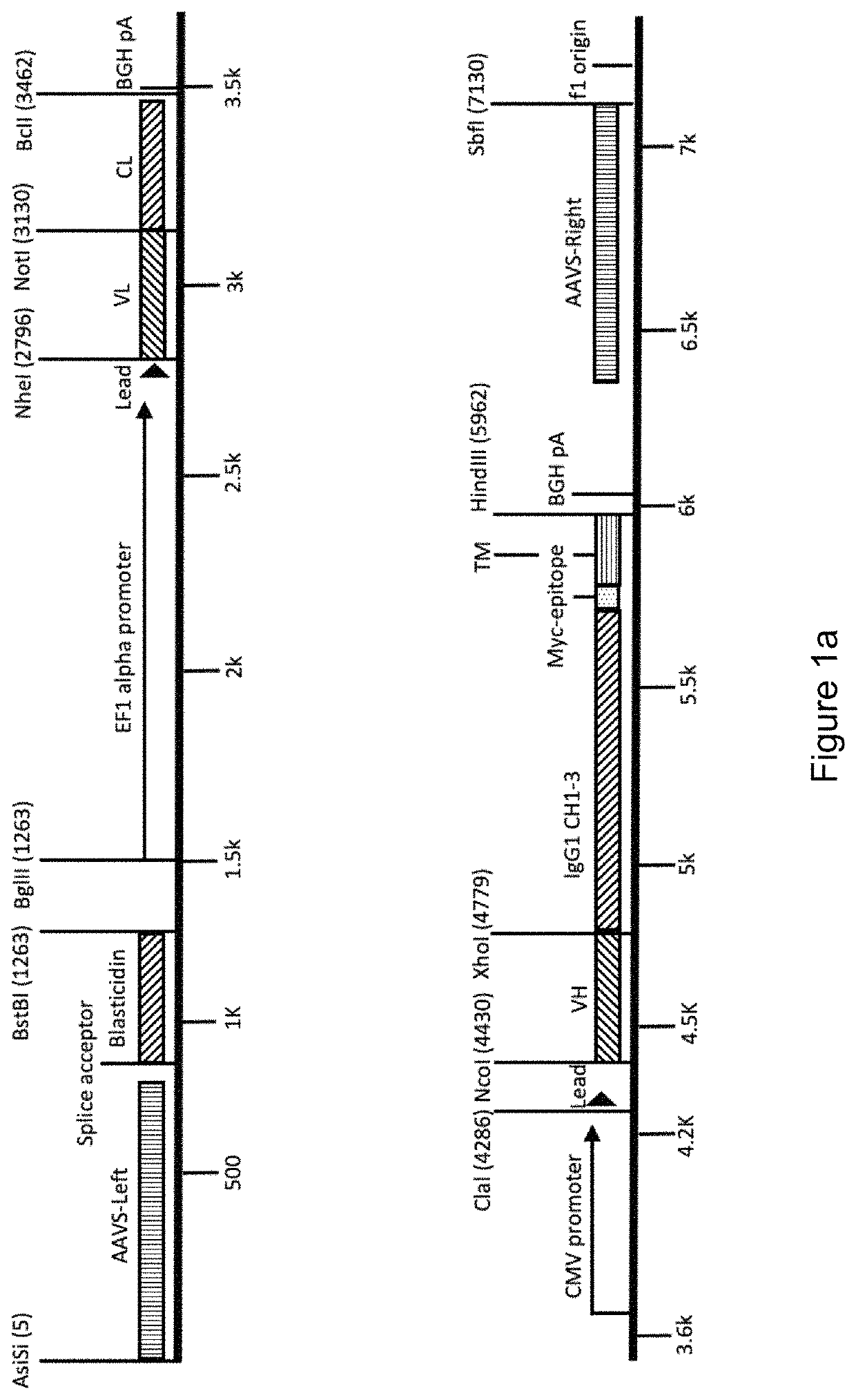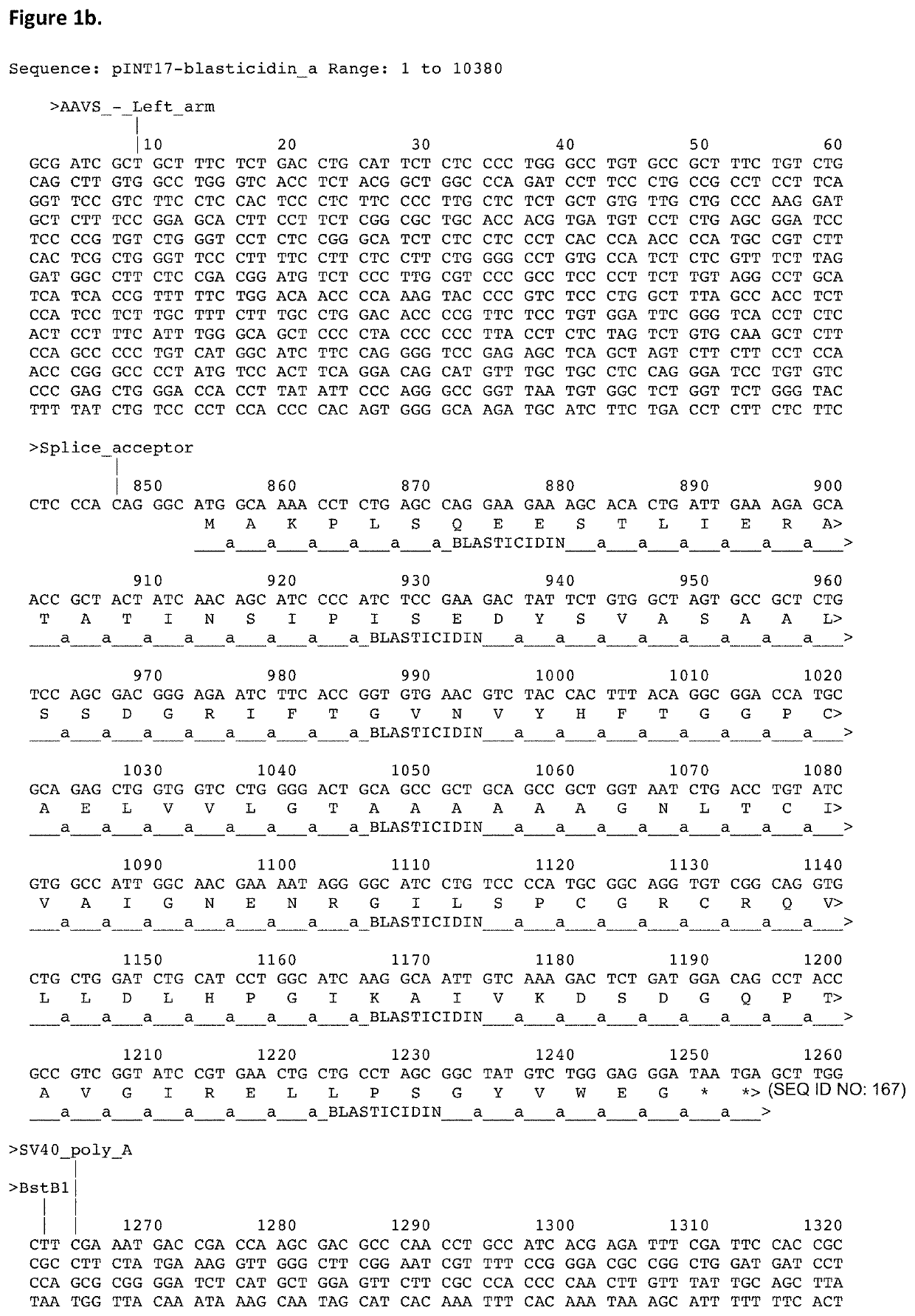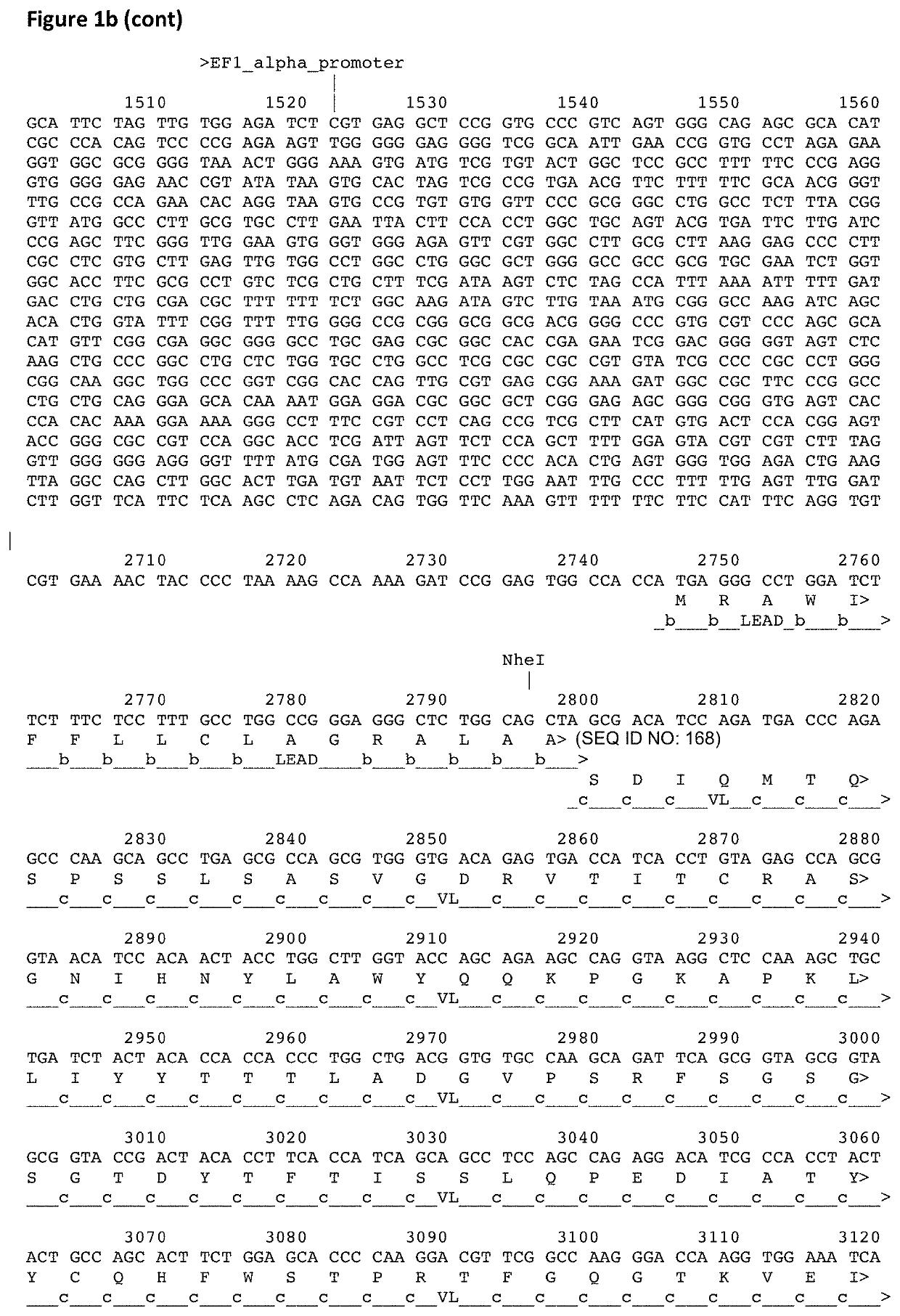Selecting for developability of polypeptide drugs in eukaryotic cell display systems
a cell display system and developability technology, applied in the direction of dna preparation, recombinant dna-technology, etc., can solve the problems of molecule failure, inability to increase the dissolved concentration, and inability to produce polypeptide drugs such as antibodies
- Summary
- Abstract
- Description
- Claims
- Application Information
AI Technical Summary
Benefits of technology
Problems solved by technology
Method used
Image
Examples
example 1
Construction of Targeting Vectors for Soluble Expression and Cell Surface Displayed IgG Formatted Antibodies
[0422]To enable the display of binder molecules, including antibodies, on the surface of higher eukaryotic cells and their subsequent genetic selection, vectors may be used to target the binder gene to a particular location in the host genome. The vector may encode a selectable marker, to enable selection of stable cell lines and this selectable marker may encode genes conferring resistance to blasticidin, G418 / Geneticin, hygromycin, puromycin or zeocin. The targeting vector may contain an exogenous promoter to drive expression of the gene encoding the selectable marker. Alternatively, the transgene may be integrated into the cellular DNA at a location downstream of an endogenous promoter to enable the preferential selection of the correctly integrated transgenes. The targeting vector will also encode homology arms to allow homologous recombination to the relevant chromosomal ...
example 2
Comparison of Surface Presentation Level of Parental and Developability Enhanced Clones for 3 Pairs of Antibodies
[0425]We examined three antibody pairs where the original parental antibody possesses a poor developability profile and their re-engineered daughter molecules, which were altered to improve their self-interaction and cross-interaction properties. The panel included CNTO607, a monoclonal antibody against interleukin IL-13, and its modified counterpart CNTO607 W100A14. CNTO607 is poorly soluble at neutral pH, precipitates in PBS buffer at high concentrations and displays self-interaction as measured in an affinity-capture self-interaction nanoparticle spectroscopy (AC-SINS) assay39. Structure determination of CNTO697 revealed a hydrophobic patch in the heavy chain CDR3. The VH CDR3 mutation W100A improved both its antibody solubility and cross-interaction chromatography (CIC) profile47. CIC measures binding to human serum polyclonal antibodies immobilized on a column matrix...
example 3a
The Relationship Between Cell Surface Presentation Level and Self-Interaction at High Concentrations
[0428]To examine the properties of the antibodies described in Example 2, antibody expression and purification was performed. Synthetic DNA encoding CNTO607, CNTO607-W100A, Ang2mAb, Ang2mAb-C49T, MEDI-1912 and MEDI-1912_STT heavy and light variable domains (see Table 1 for sequences) were cloned into a dual promoter IgG soluble expression vector based on pINT3 (WO2015166272A2) and correct cloning confirmed by DNA sequencing.
[0429]Plasmid DNA was prepared and this was used to transfect Expi293 cells (30 ml final culture volume scale) using the transfection reagent ExpiFectamine according to the manufacturer instructions (A14525, ThermoFisher Scientific). Cells were seeded at a density of 2×106 cells / ml in 25.5 ml of Expi293 Expression Medium 24 hours prior to transfection. Plasmid DNA (30 μg) was diluted in Opti-MEM Medium (1.5 ml) and ExpiFectamine 293 Reagent (80 μl) was diluted in O...
PUM
| Property | Measurement | Unit |
|---|---|---|
| critical concentration | aaaaa | aaaaa |
| solubility | aaaaa | aaaaa |
| concentration | aaaaa | aaaaa |
Abstract
Description
Claims
Application Information
 Login to View More
Login to View More - R&D
- Intellectual Property
- Life Sciences
- Materials
- Tech Scout
- Unparalleled Data Quality
- Higher Quality Content
- 60% Fewer Hallucinations
Browse by: Latest US Patents, China's latest patents, Technical Efficacy Thesaurus, Application Domain, Technology Topic, Popular Technical Reports.
© 2025 PatSnap. All rights reserved.Legal|Privacy policy|Modern Slavery Act Transparency Statement|Sitemap|About US| Contact US: help@patsnap.com



